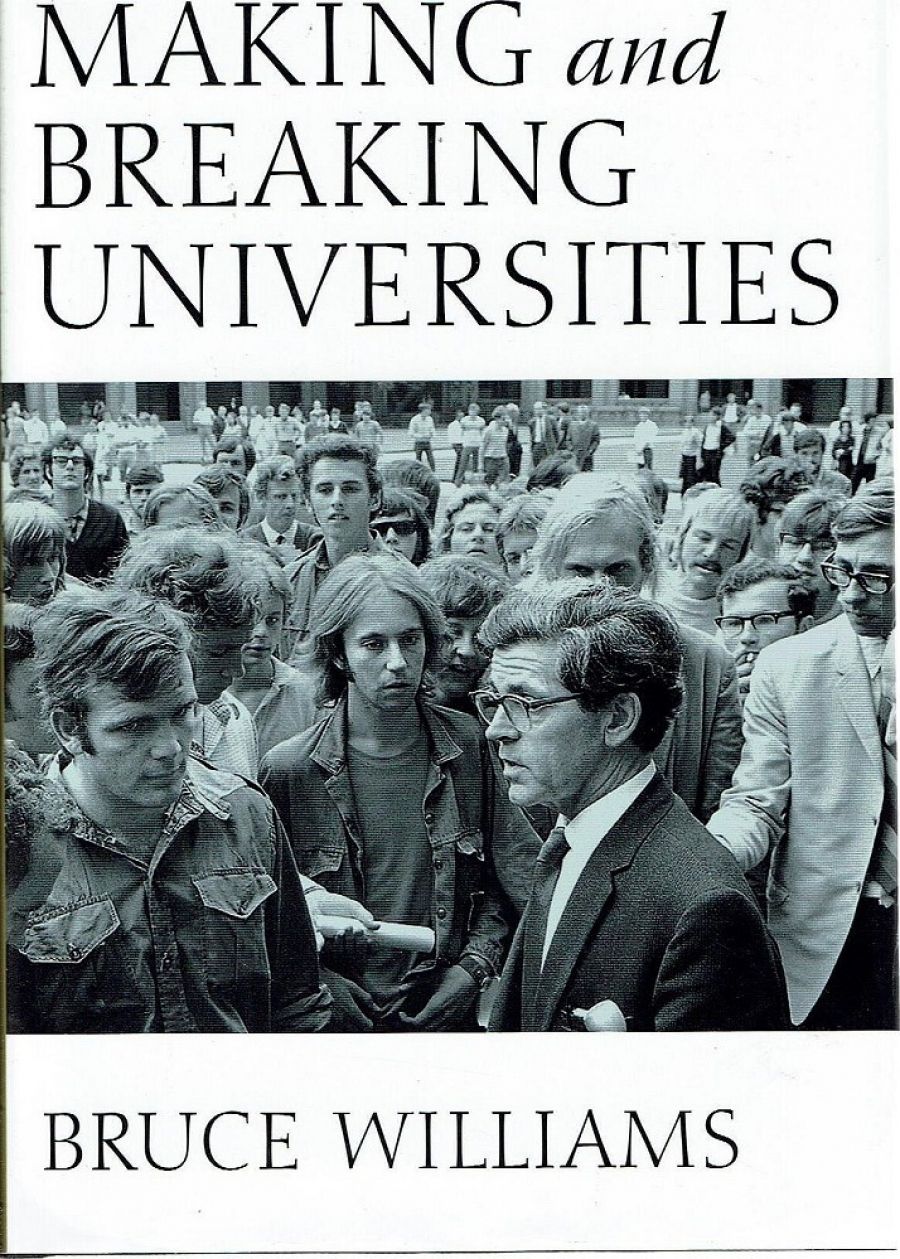
- Free Article: No
- Contents Category: Memoir
- Review Article: Yes
- Online Only: No
- Custom Highlight Text: I first met Sir Bruce Williams as a wise and wry voice in sceptical register at meetings of the Senate and its Finance Committee at the University of Sydney in the late 1990s. His service to these bodies followed a distinguished career as an academic, economist, university administrator and adviser to governments on policy formulation and implementation in higher education, science and technology. His is a public life that now extends over half a century and spans both Australia and the UK. The most prominent segment in Williams’s long and influential association with higher education in Australia is his time as vice-chancellor of the University of Sydney from 1967 to 1981, a period that he characterises as ‘discontent and disruption’: student and staff ‘revolt’, the protest movements against the Vietnam War and apartheid. It also saw the beginning to some modifications of the university’s hierarchical and gender structures
- Book 1 Title: Making And Breaking Australian Universities
- Book 1 Subtitle: Memoirs of an academic life in Australia and Britain 1936–2004
- Book 1 Biblio: Macleay Press, $49.95 hb, 329 pp
Those who attend meetings of University Councils or Sen-ates, or who visit the glossy corridors that house the ever-expanding senior administrations, with their ever-expanding ranks of deputy, pro, assistant and assistant pro-vice-chancellors, many of whom have had little contact with teaching and research, might well wonder about the purpose of our contemporary universities, and whether CBD-type buildings and glossy brochures a great university do make.
Williams has no doubts about what makes great universities. He is absolutely certain that they are made by their academic staff through their contributions to knowledge and the quality of their teaching. As to the survival of the traditional university, Williams is cautiously optimistic. If academics continue to subscribe to, and to practise, ethical values (defined, following Eric Ashby, as reverence for truth coupled with tolerance of error, egalitarianism and internationalism), and to strive for excellence in teaching, research and examining, and if governing bodies keep a watchful brief on the fit of their institutions and procedures to contemporary society and its present and future needs, then many of our universities can survive as ‘places’ where free enquiry and critical learning flourish.
Williams thus presents a defence of the traditional élitist university that moulded him and to which he has committed his long career. This institution may not survive, even if it should. But the aims and values that Williams outlines need to be followed and defended. Making and Breaking Universities is an important document for the history of tertiary education in Australia, revealing as it does the roles and views of one of its major participants over the past half century.


Comments powered by CComment